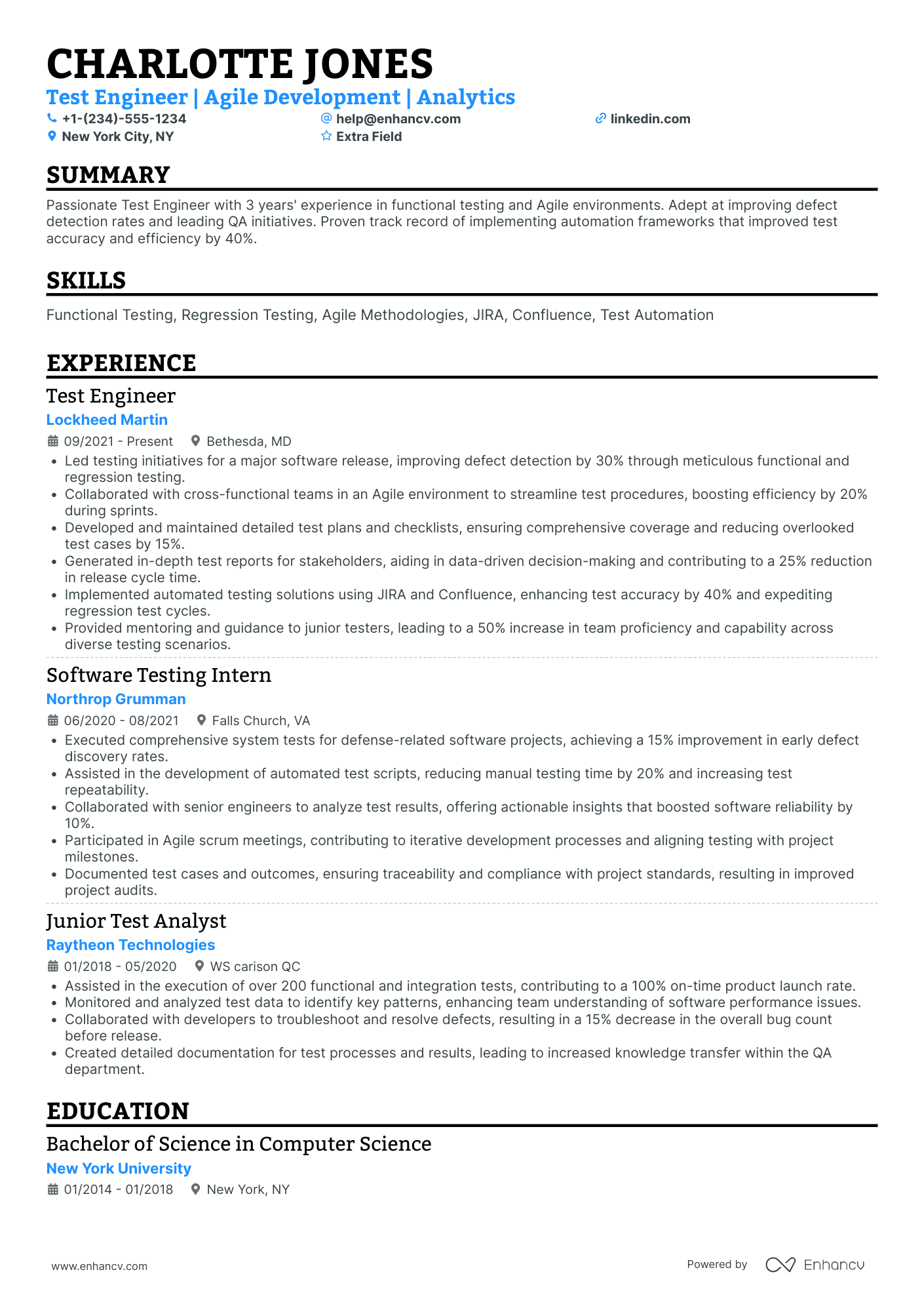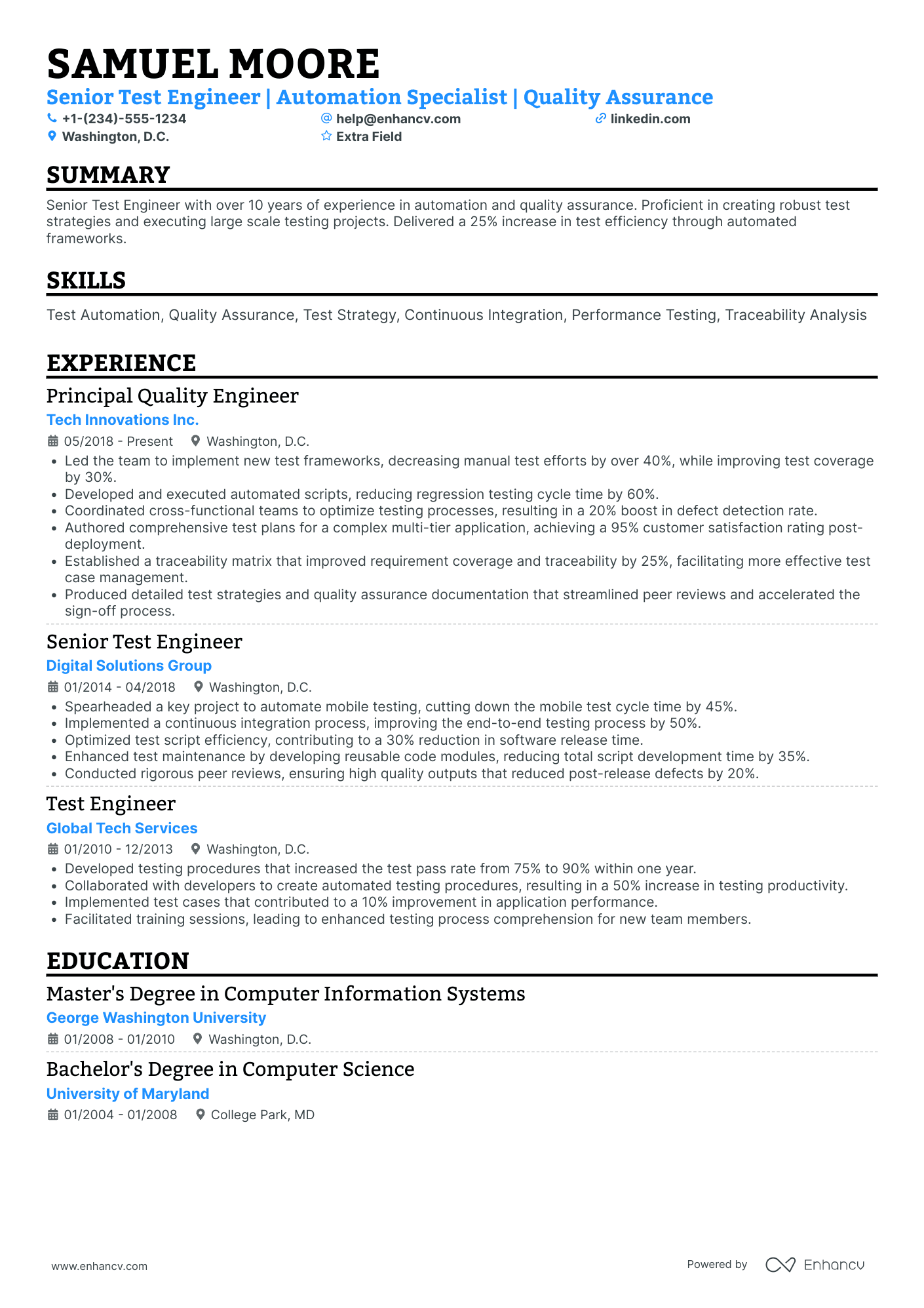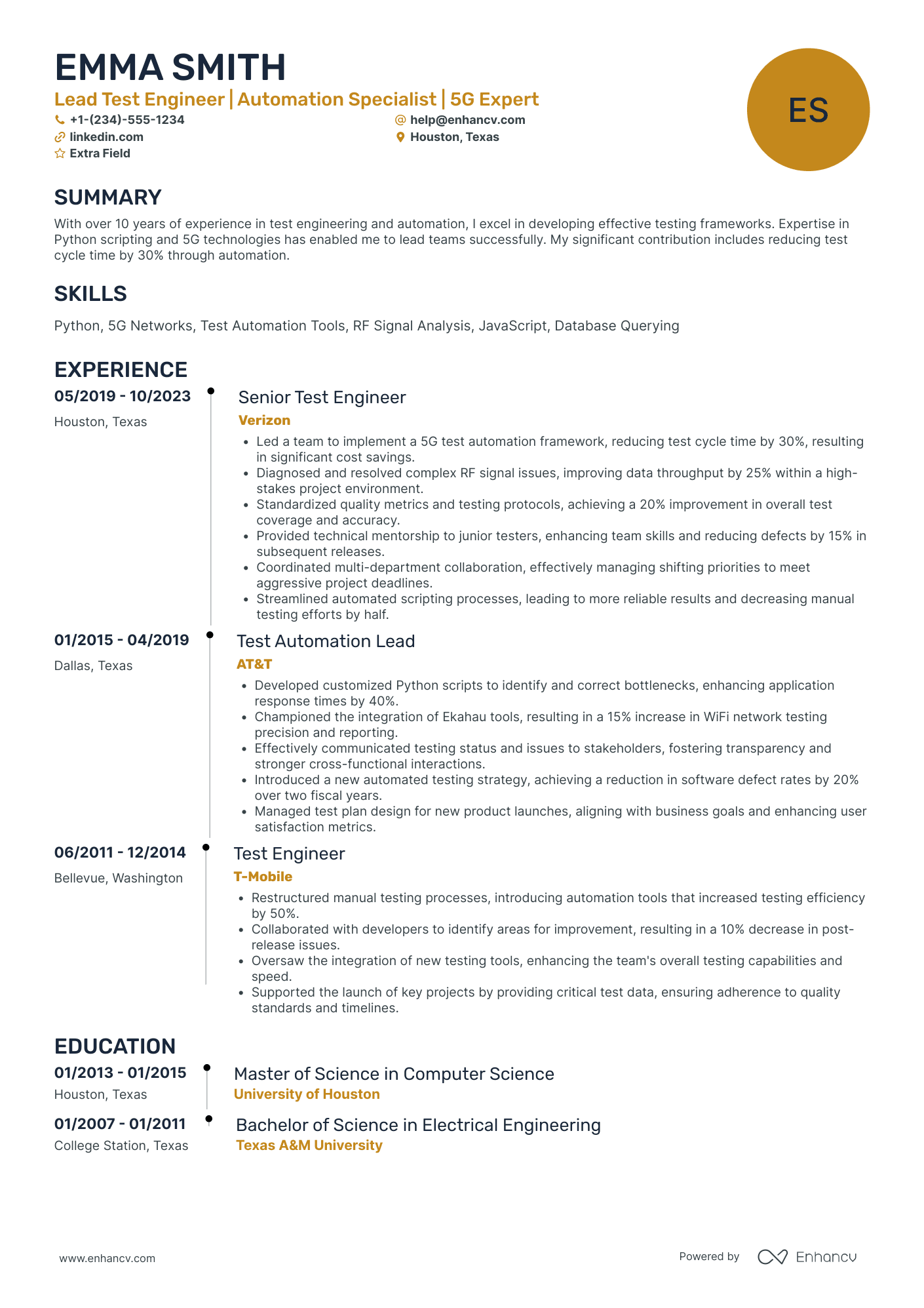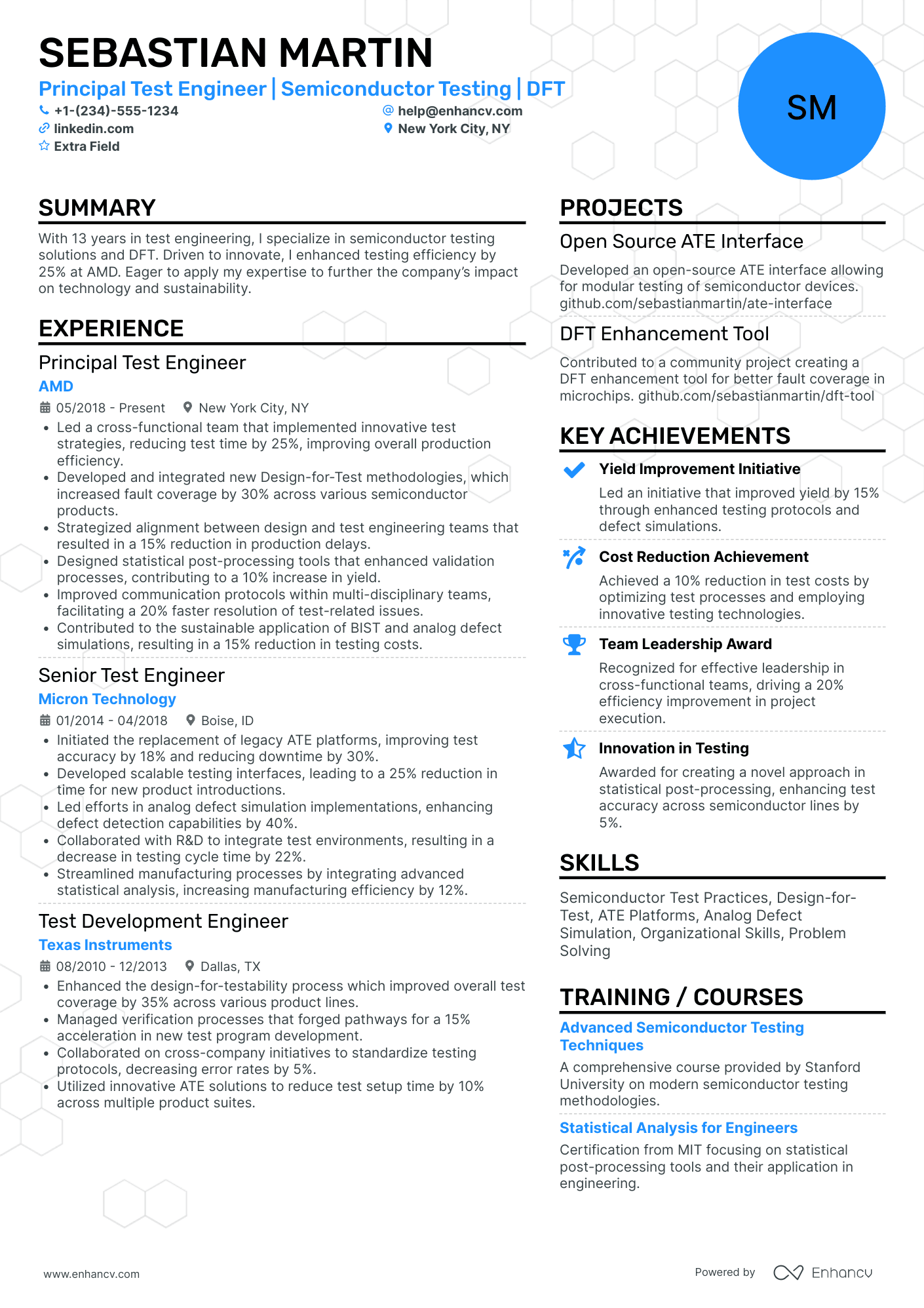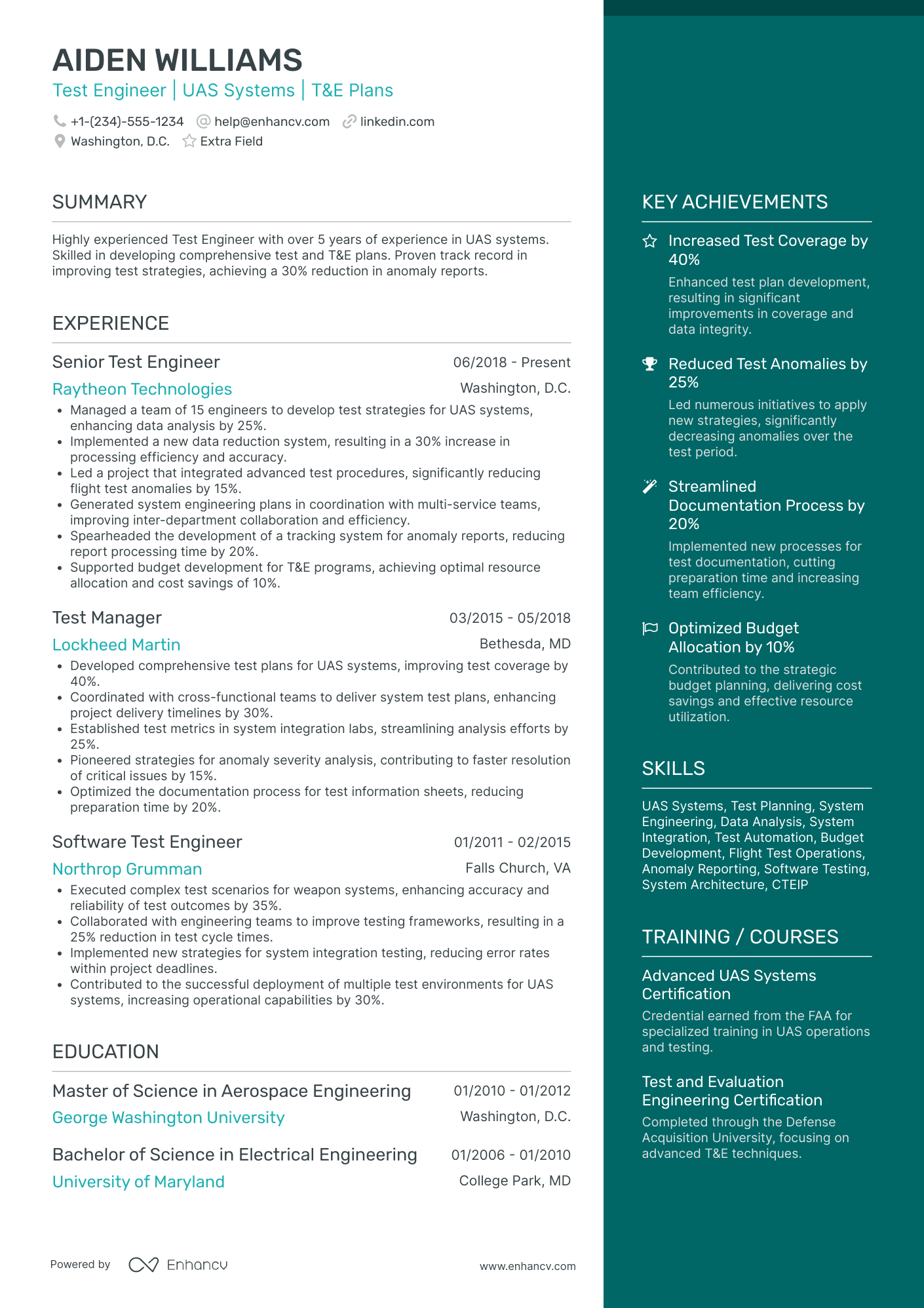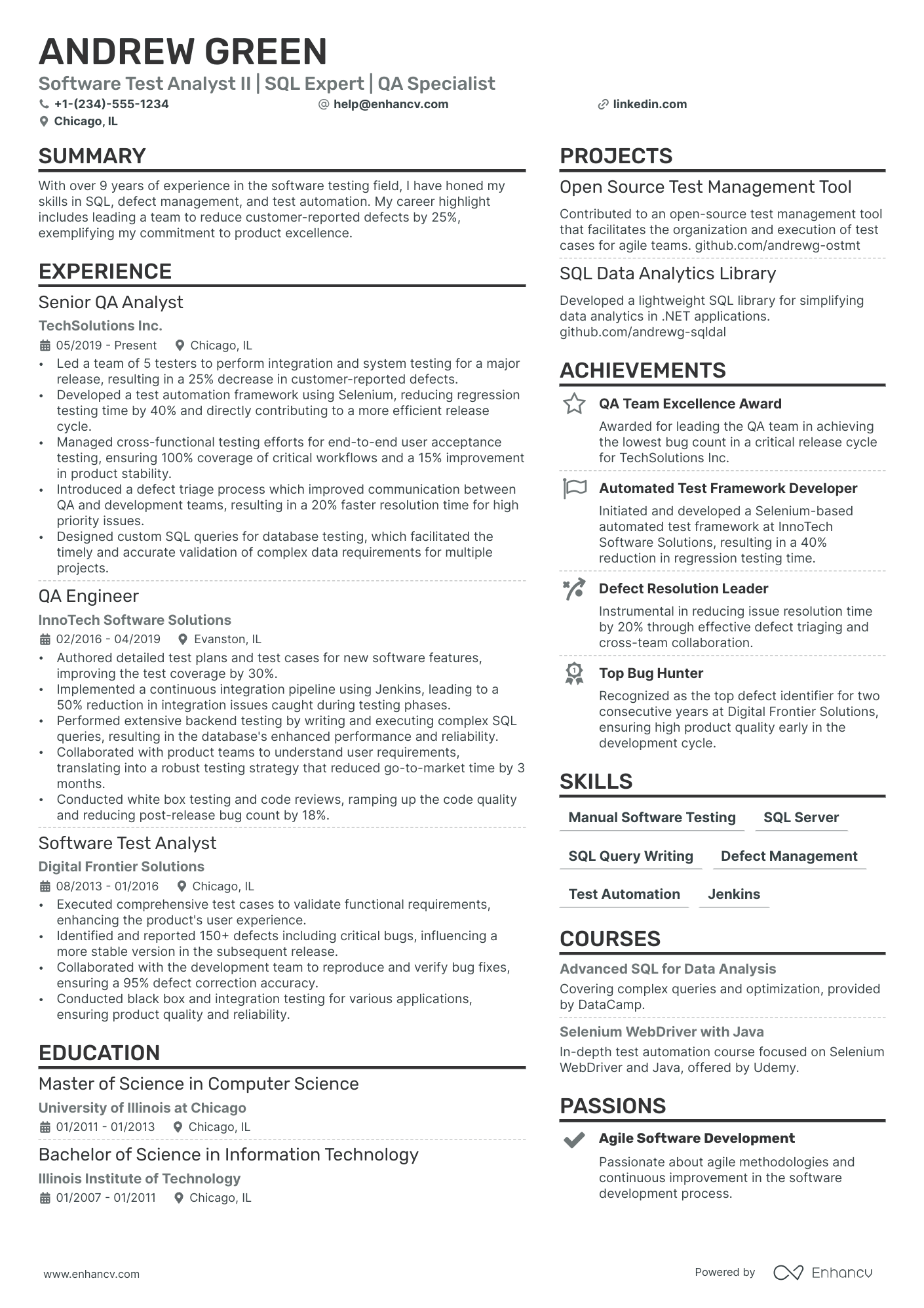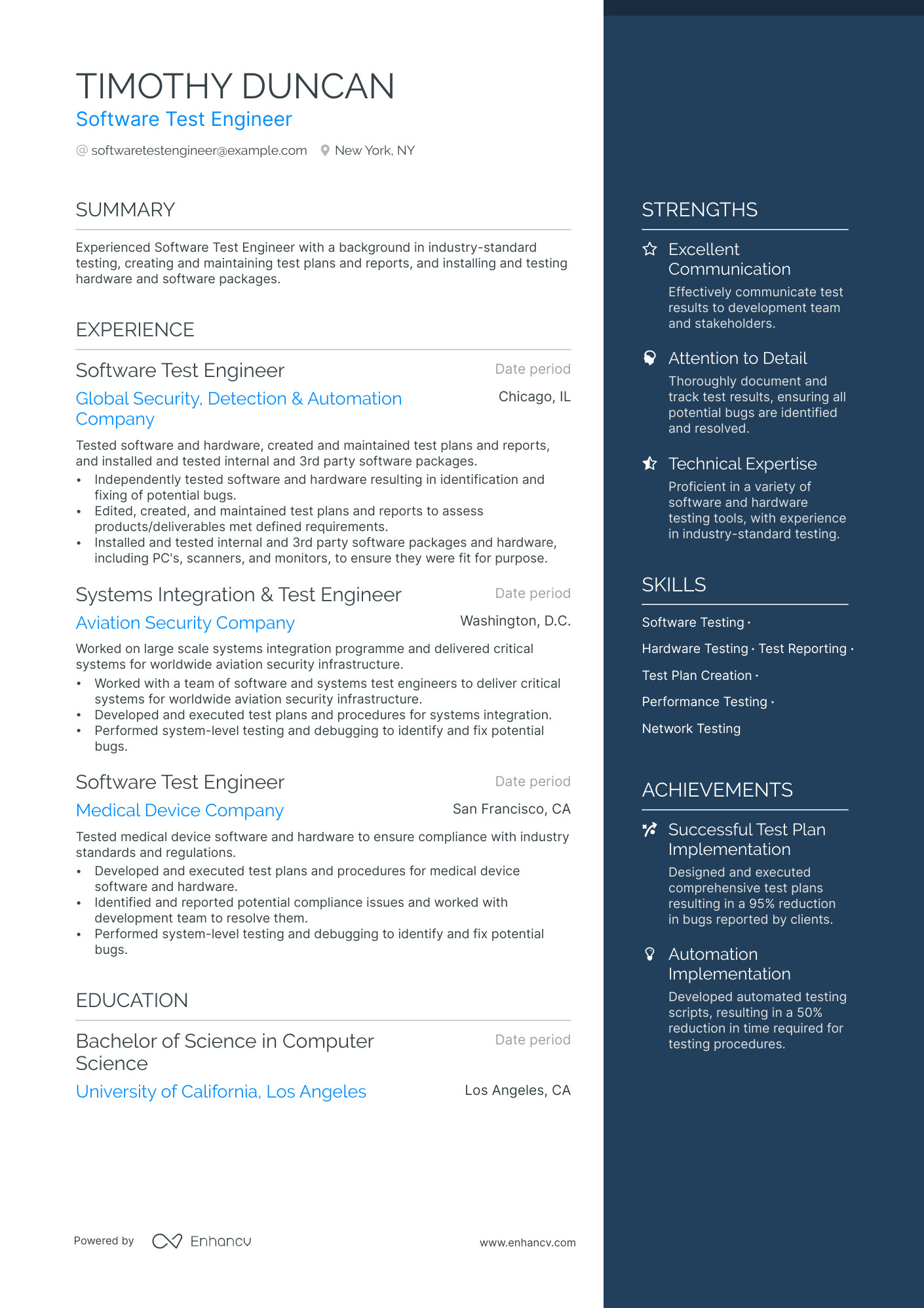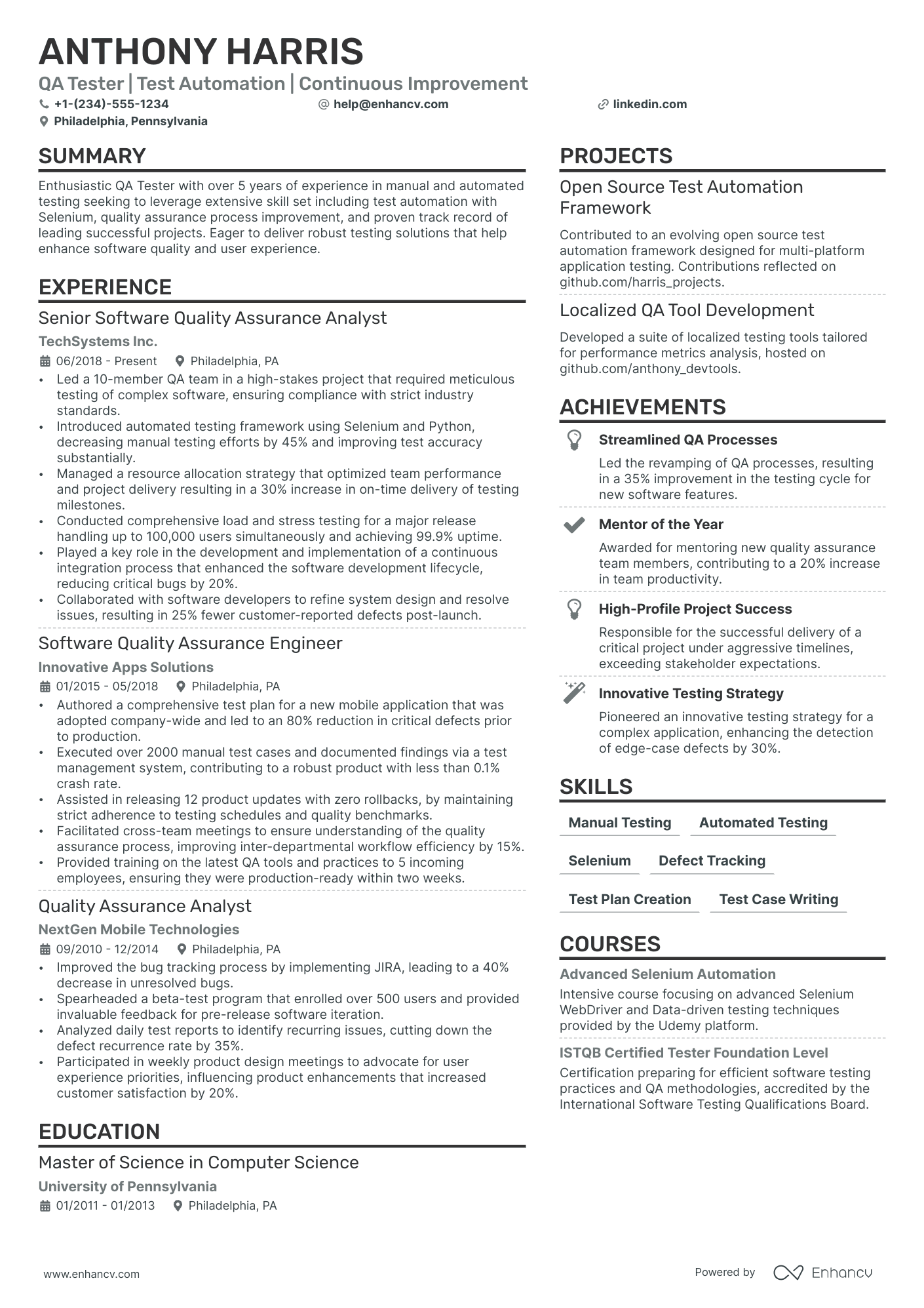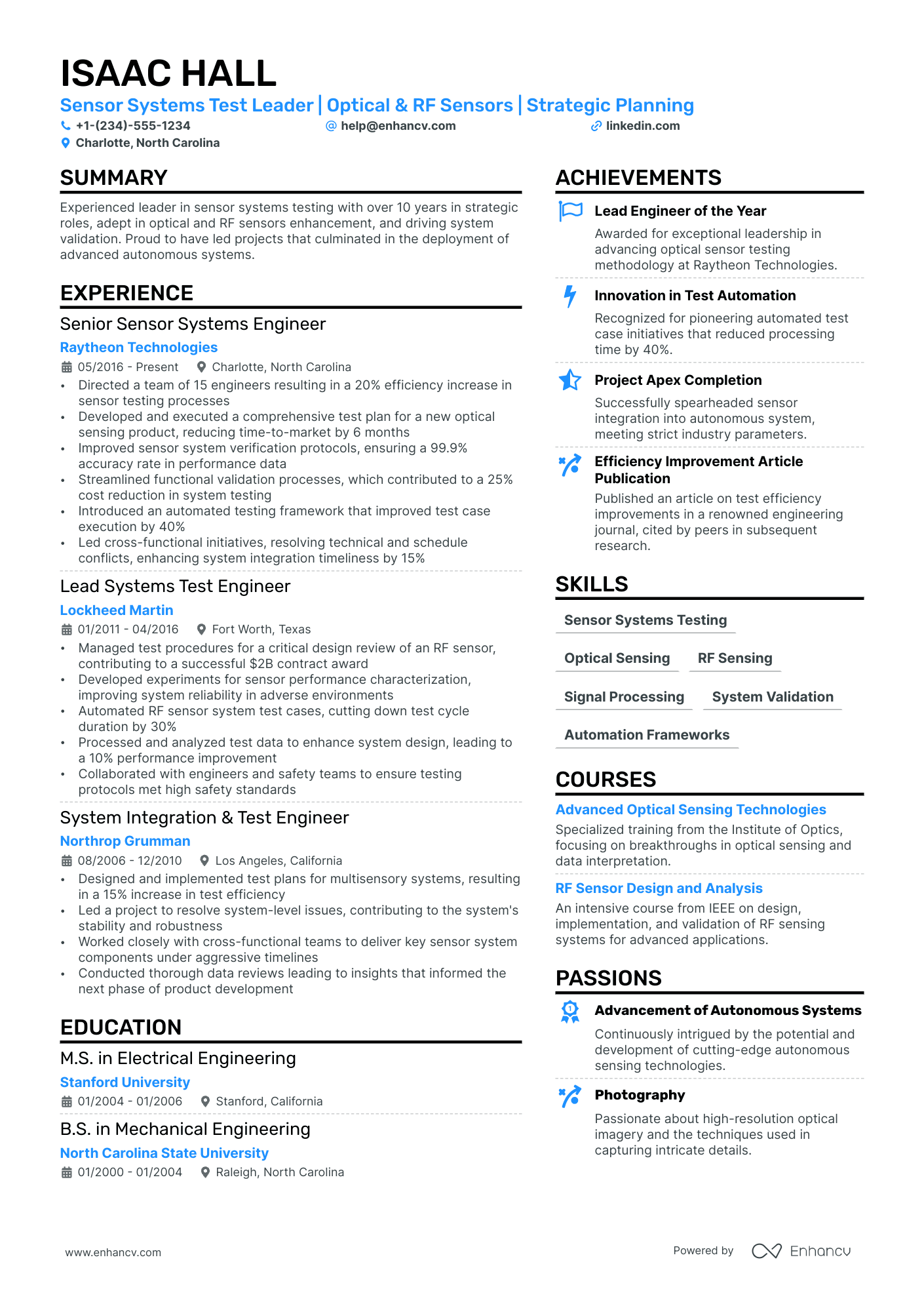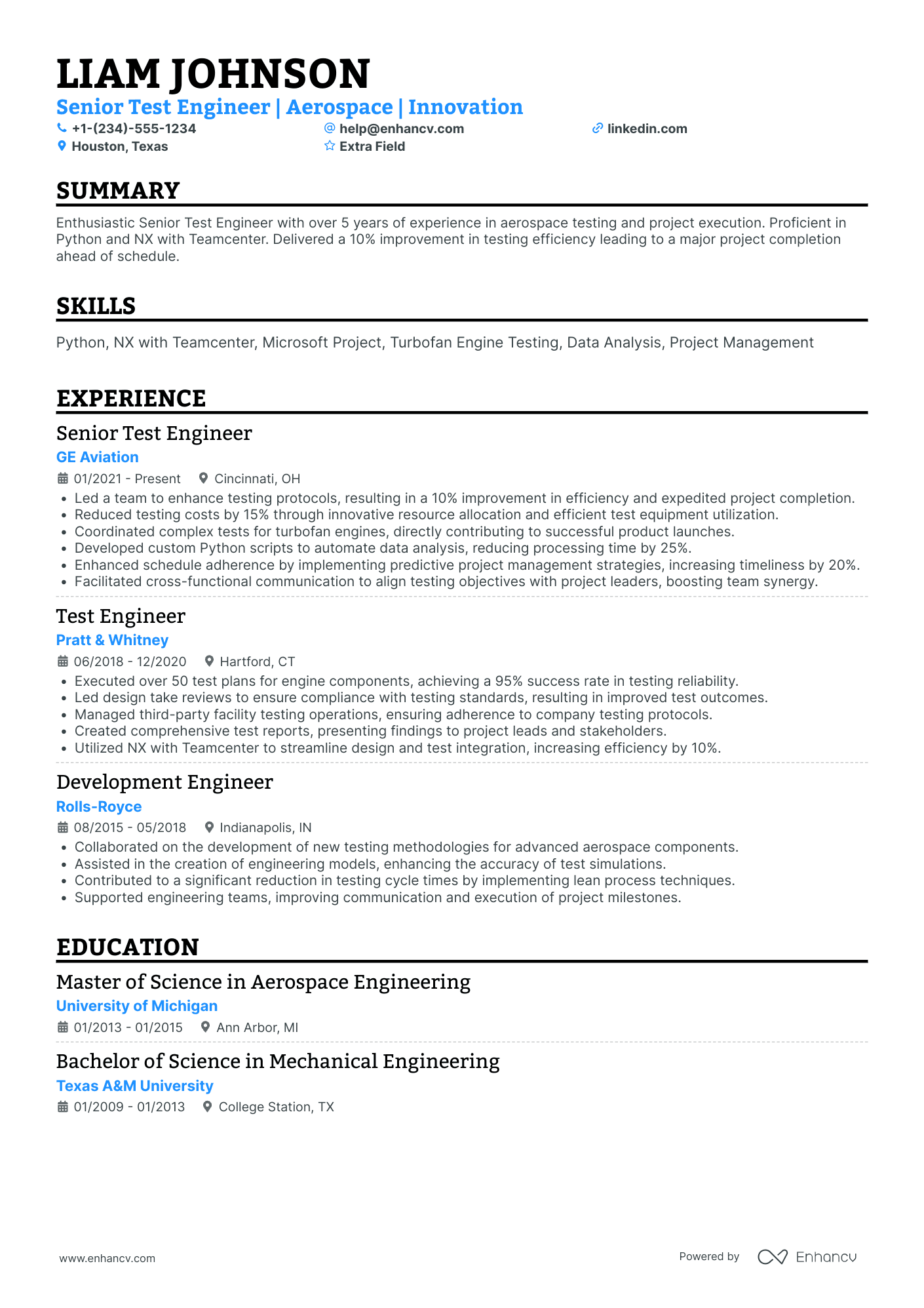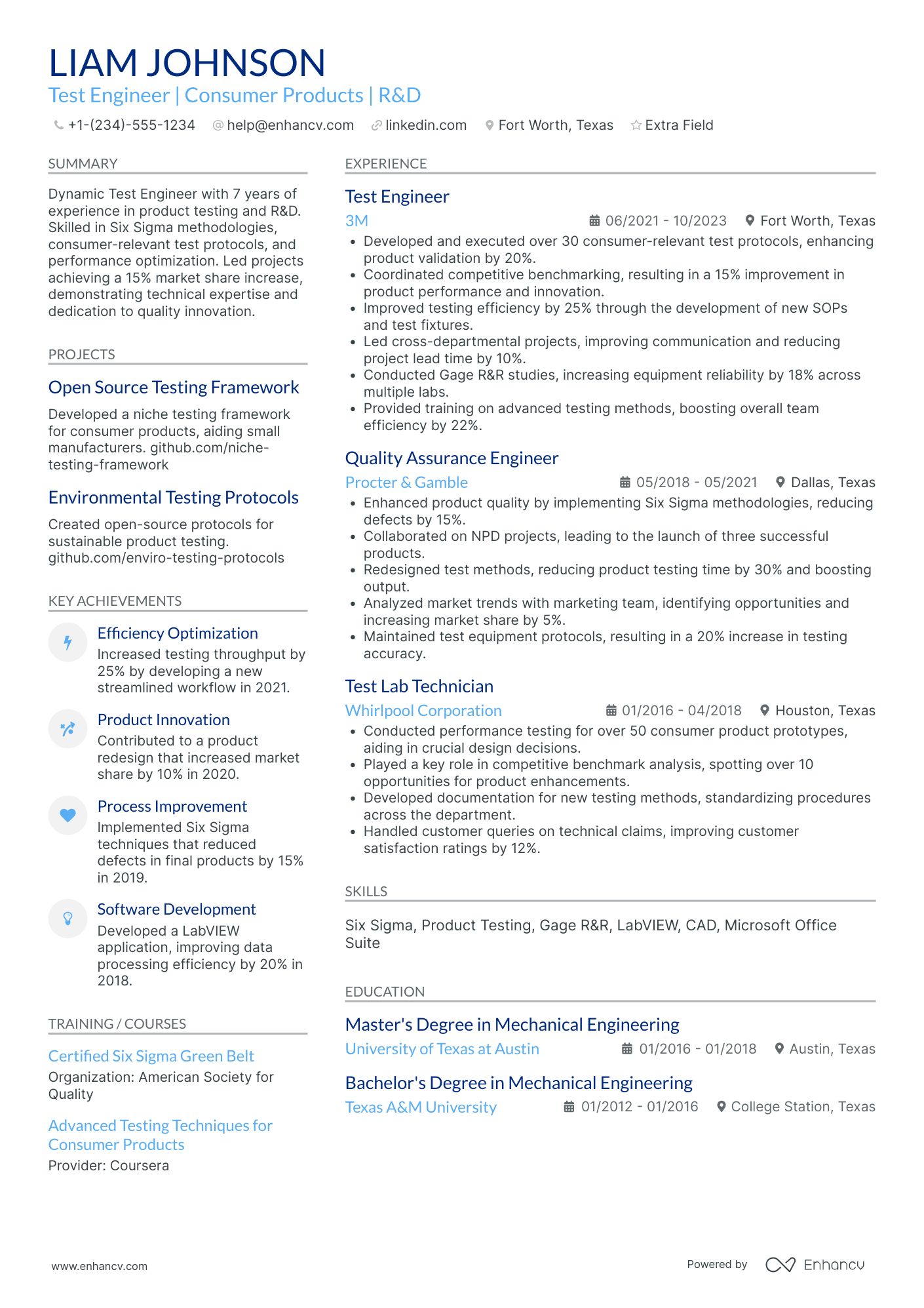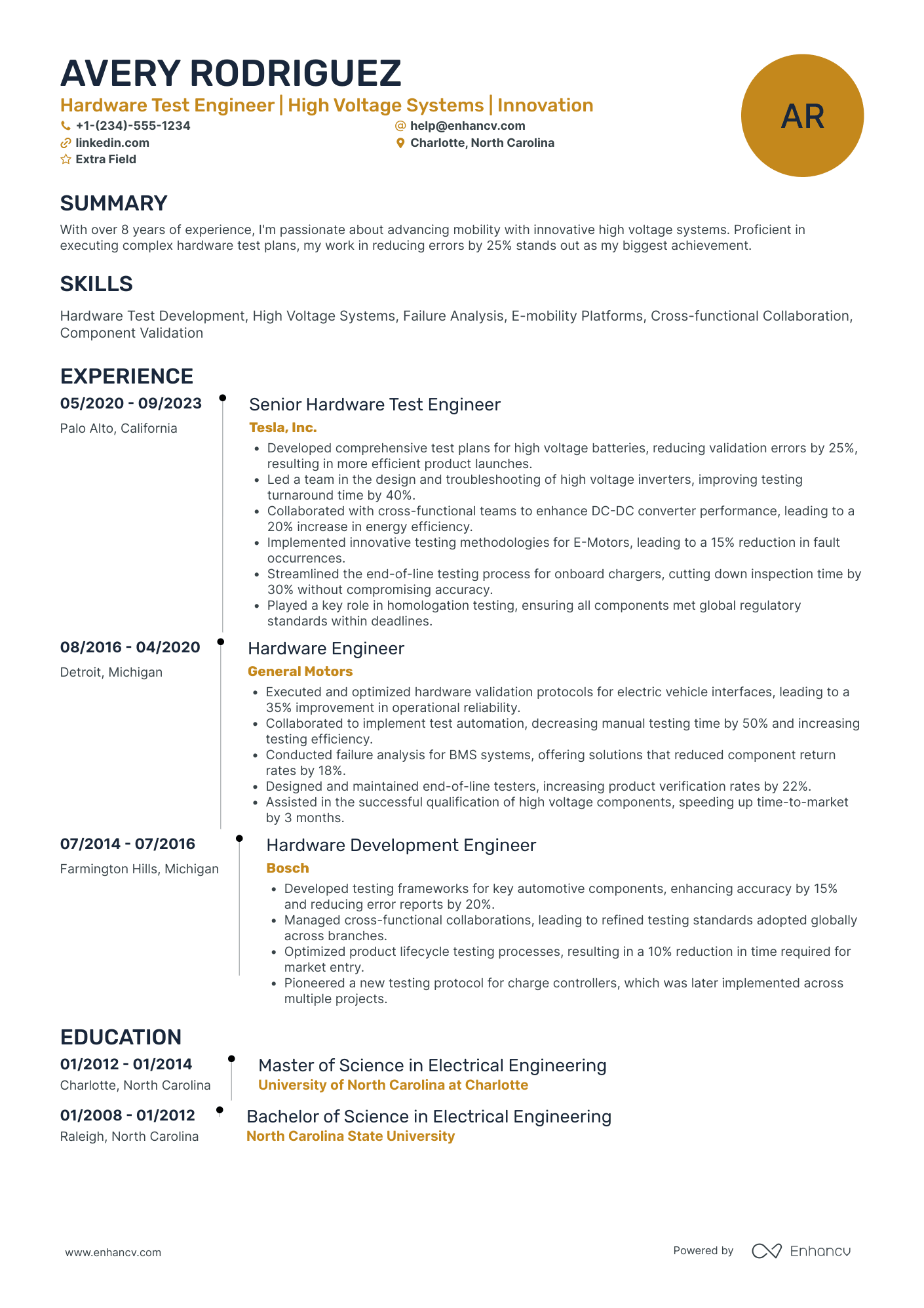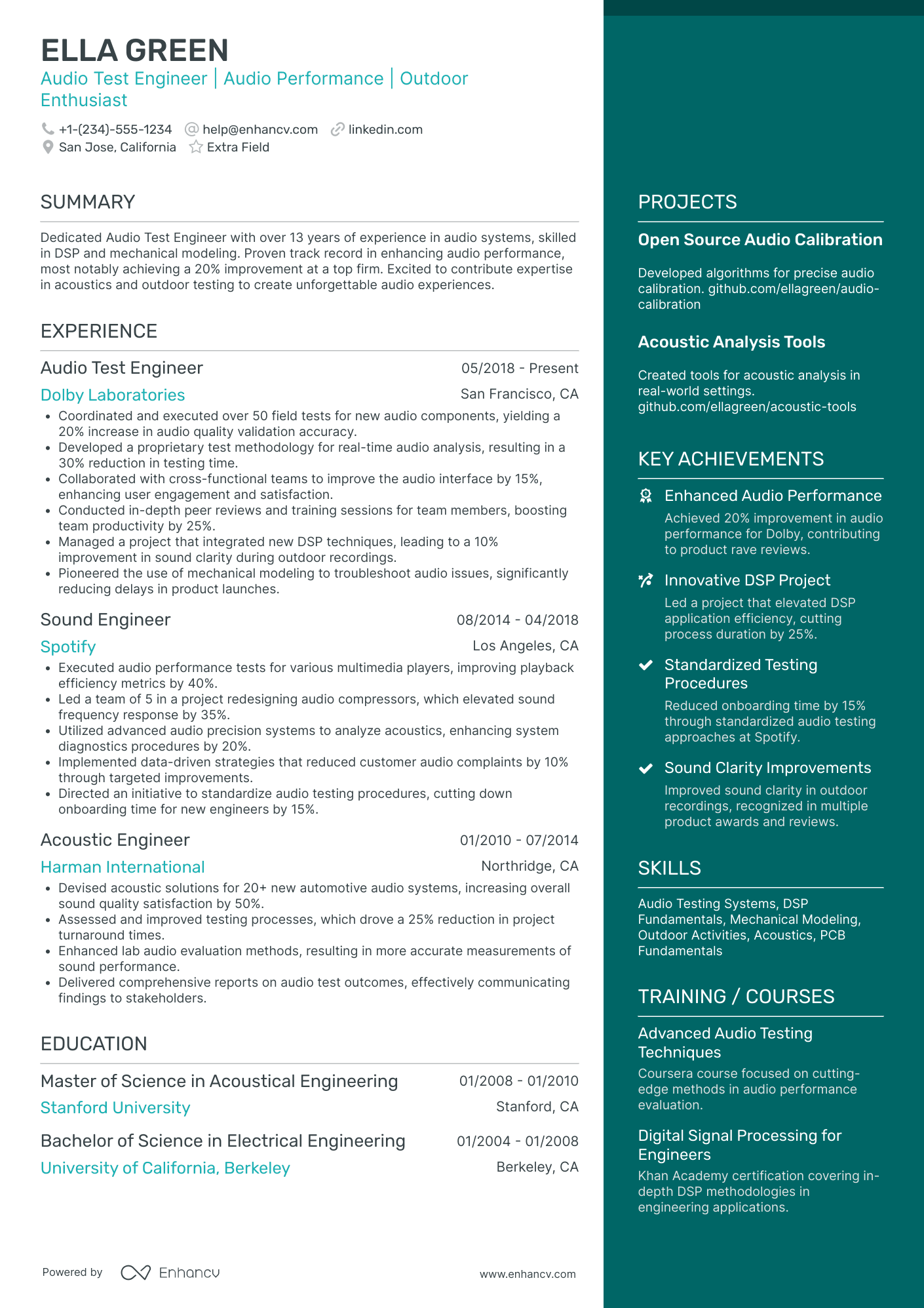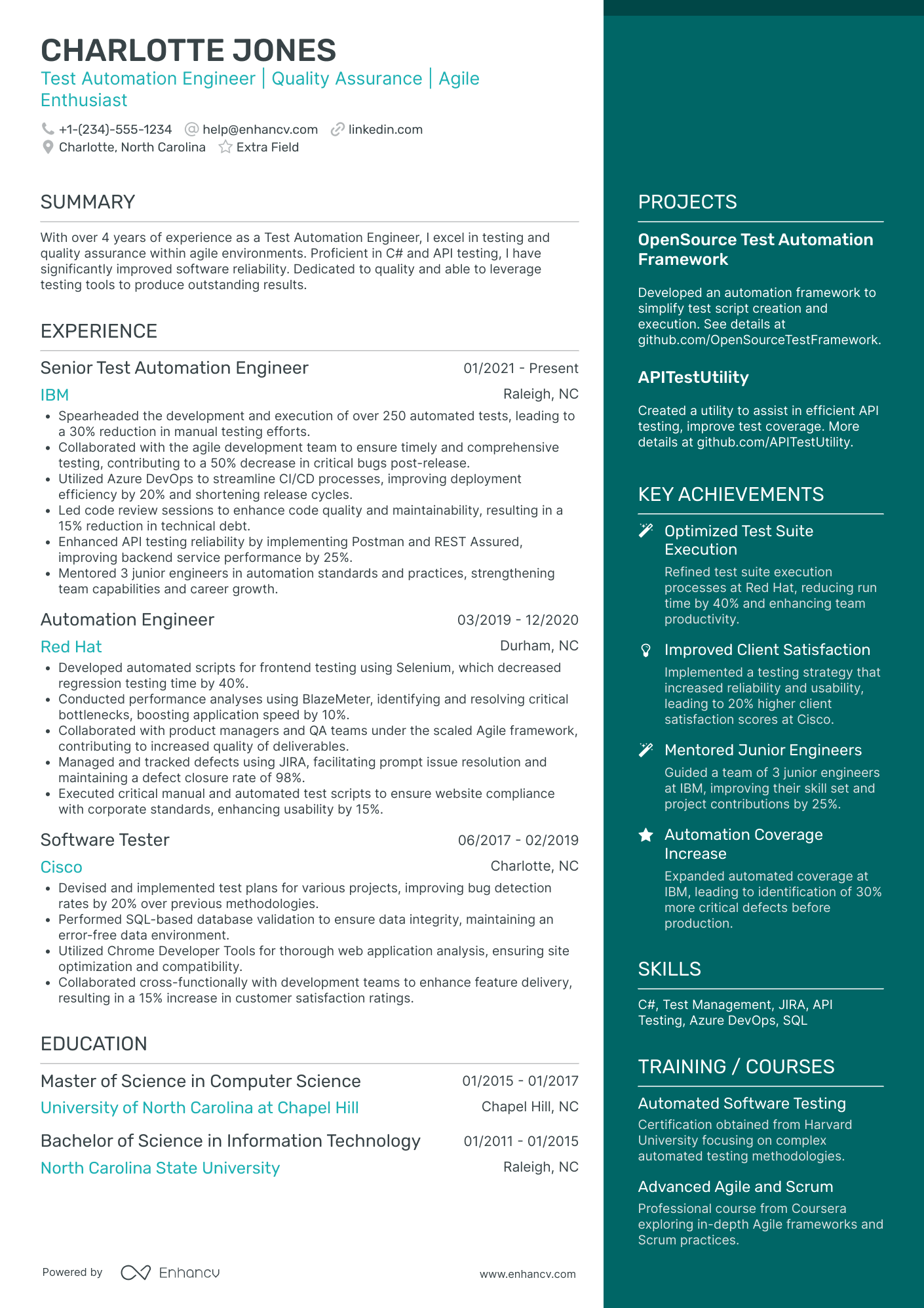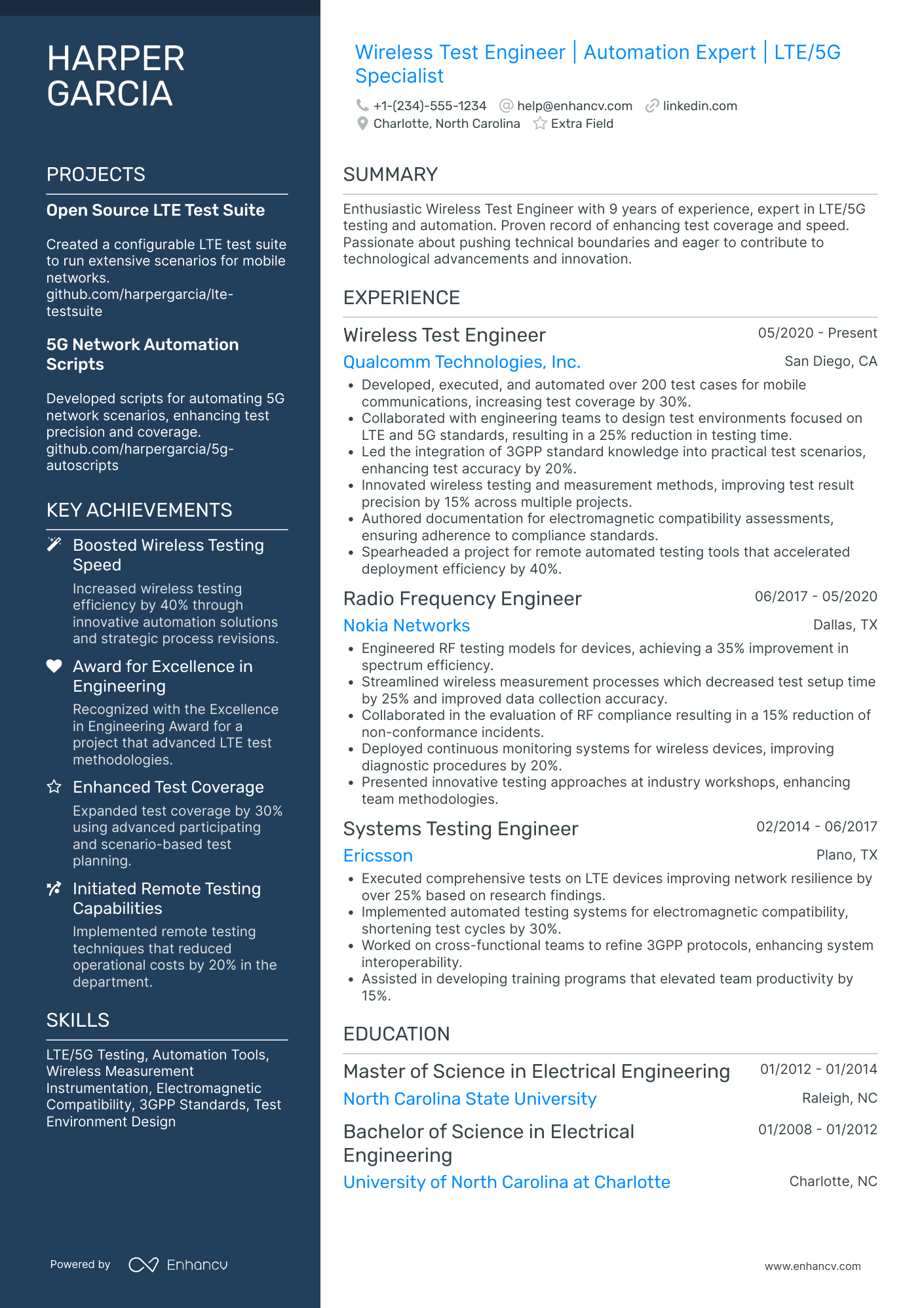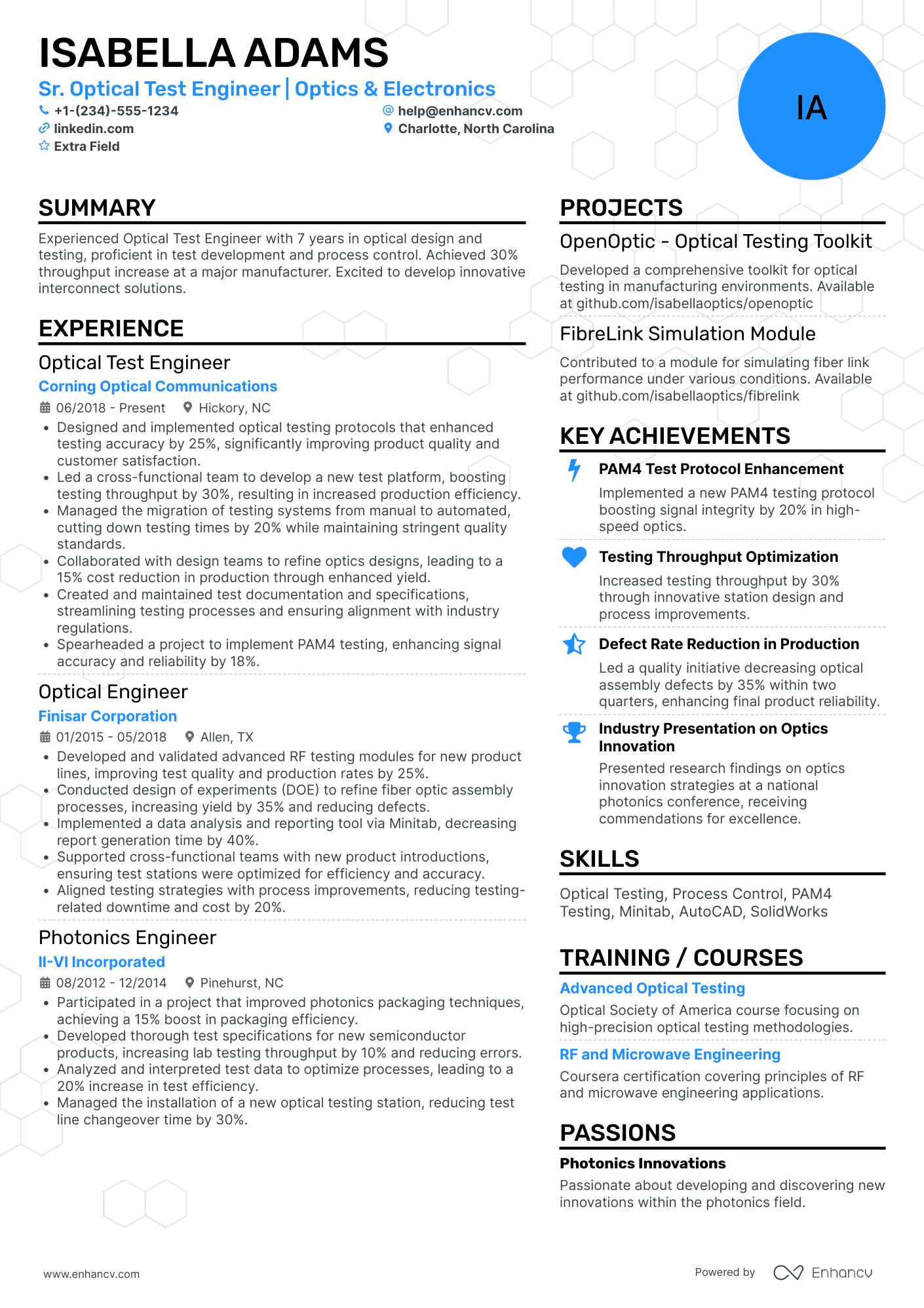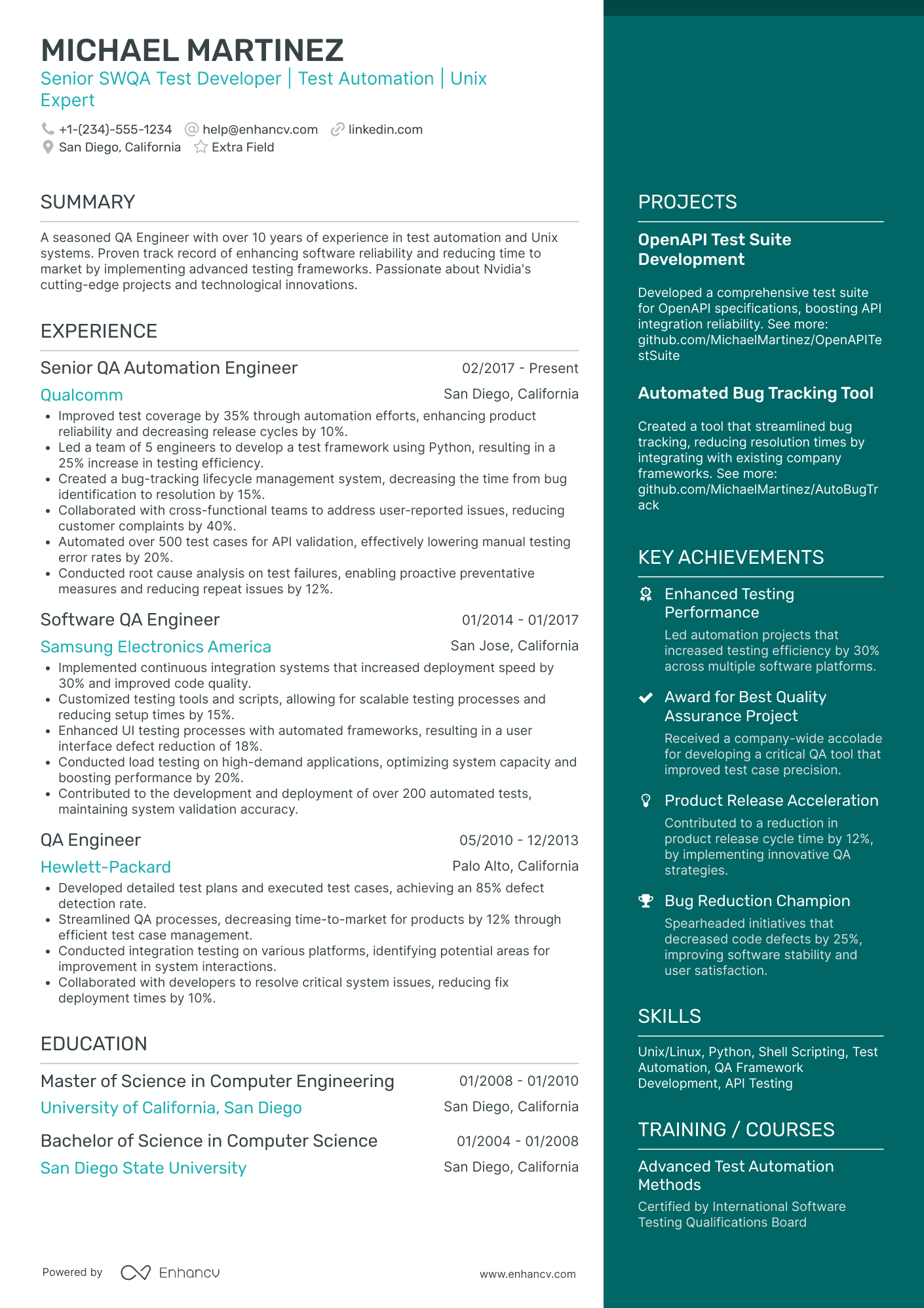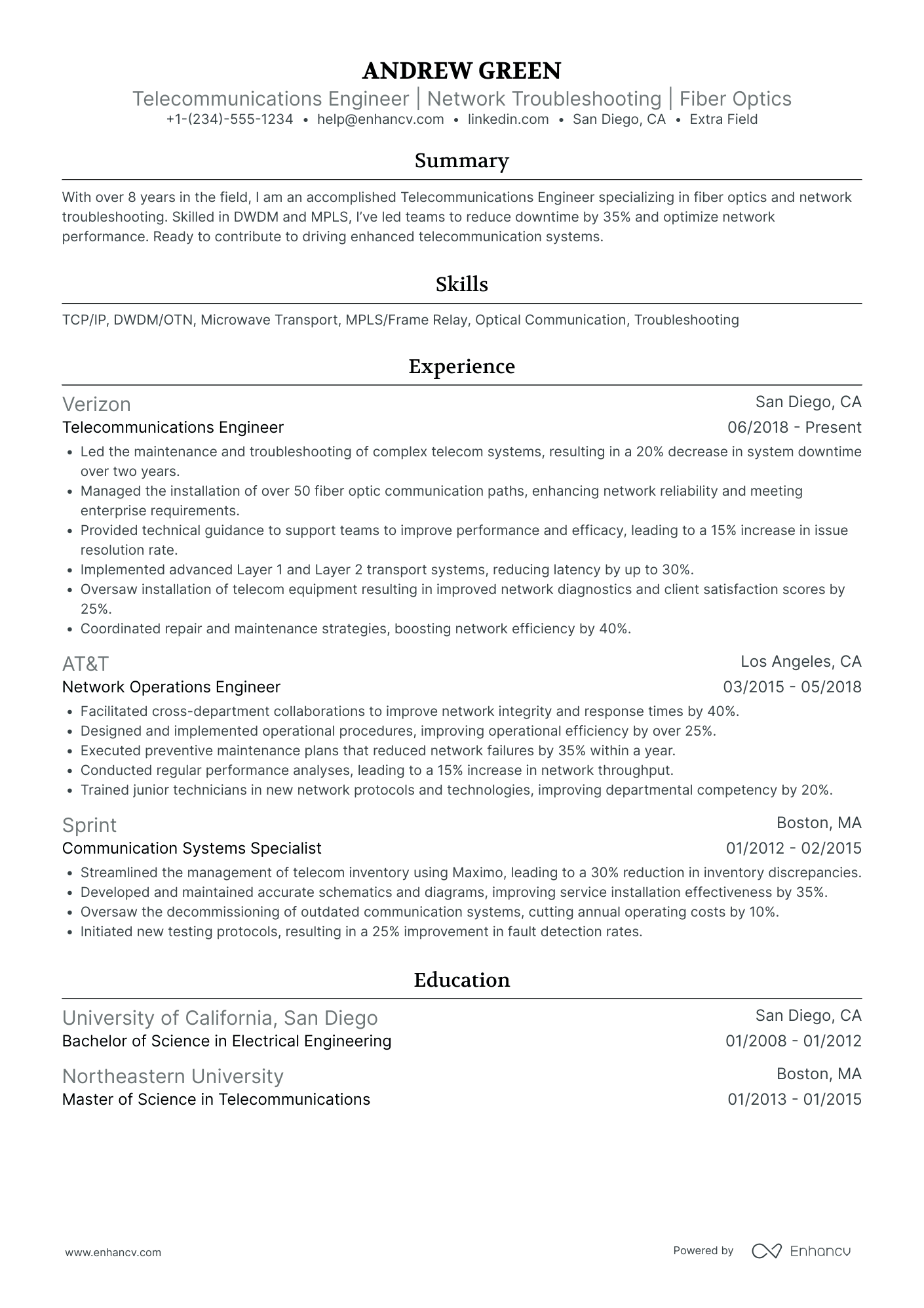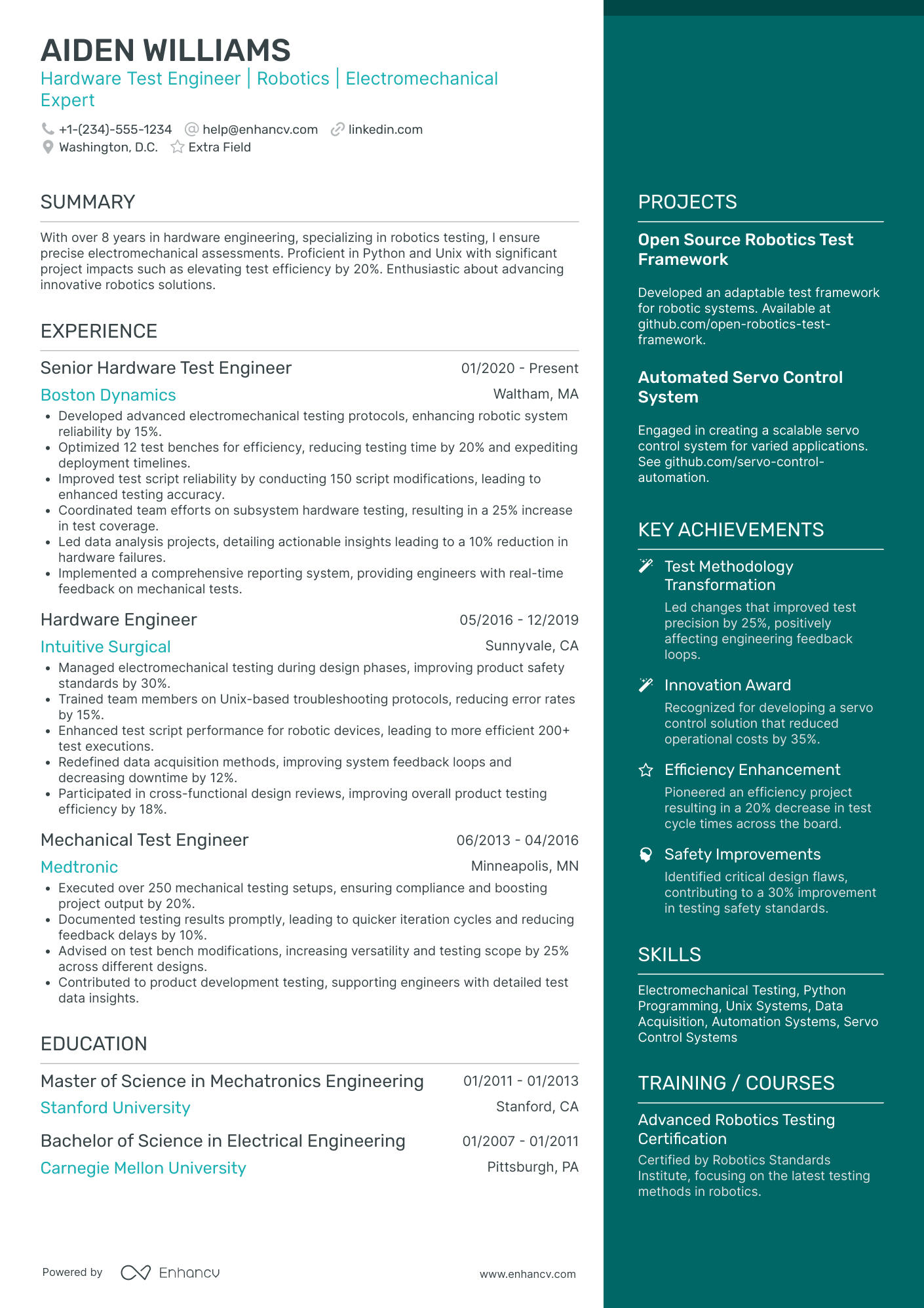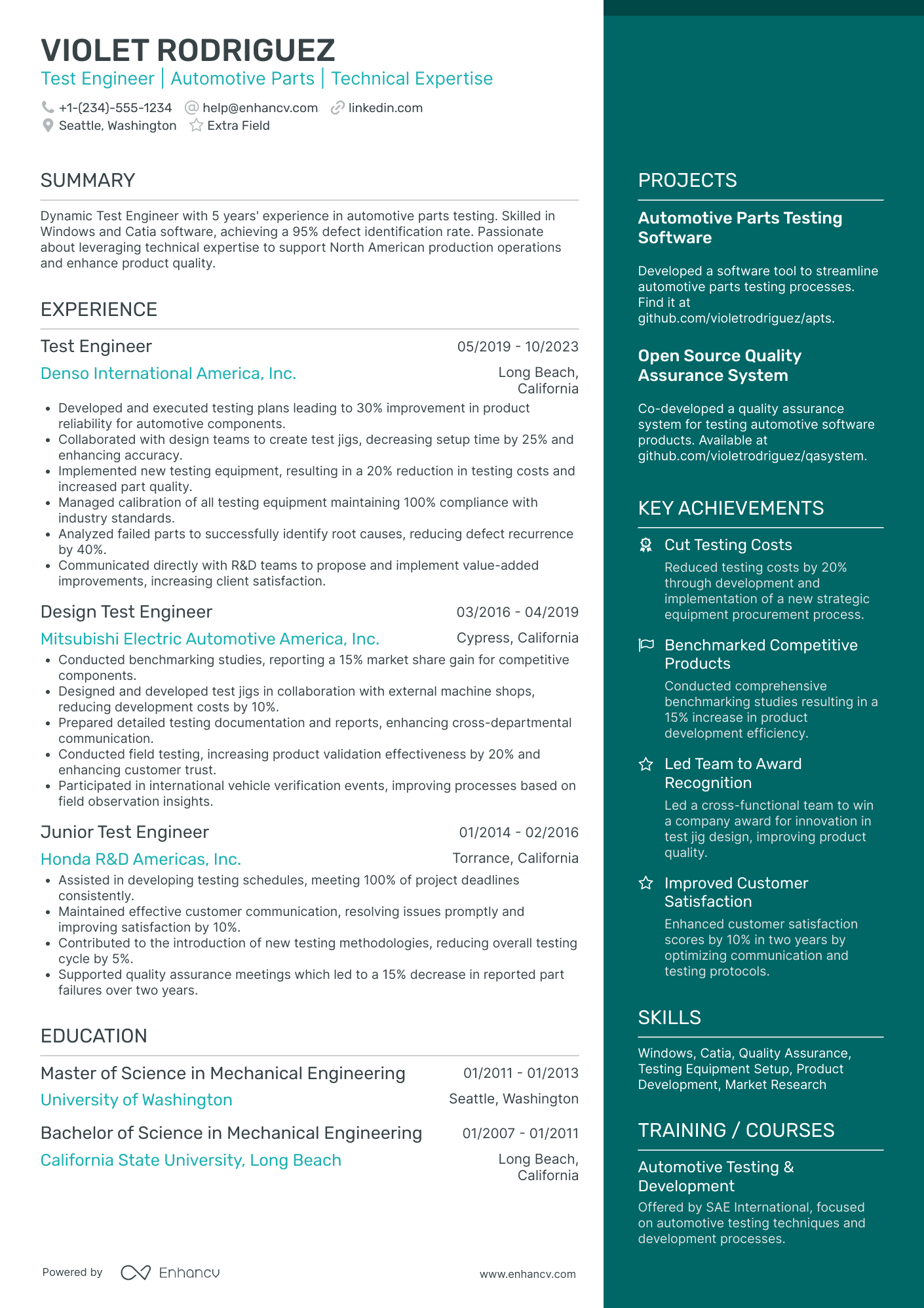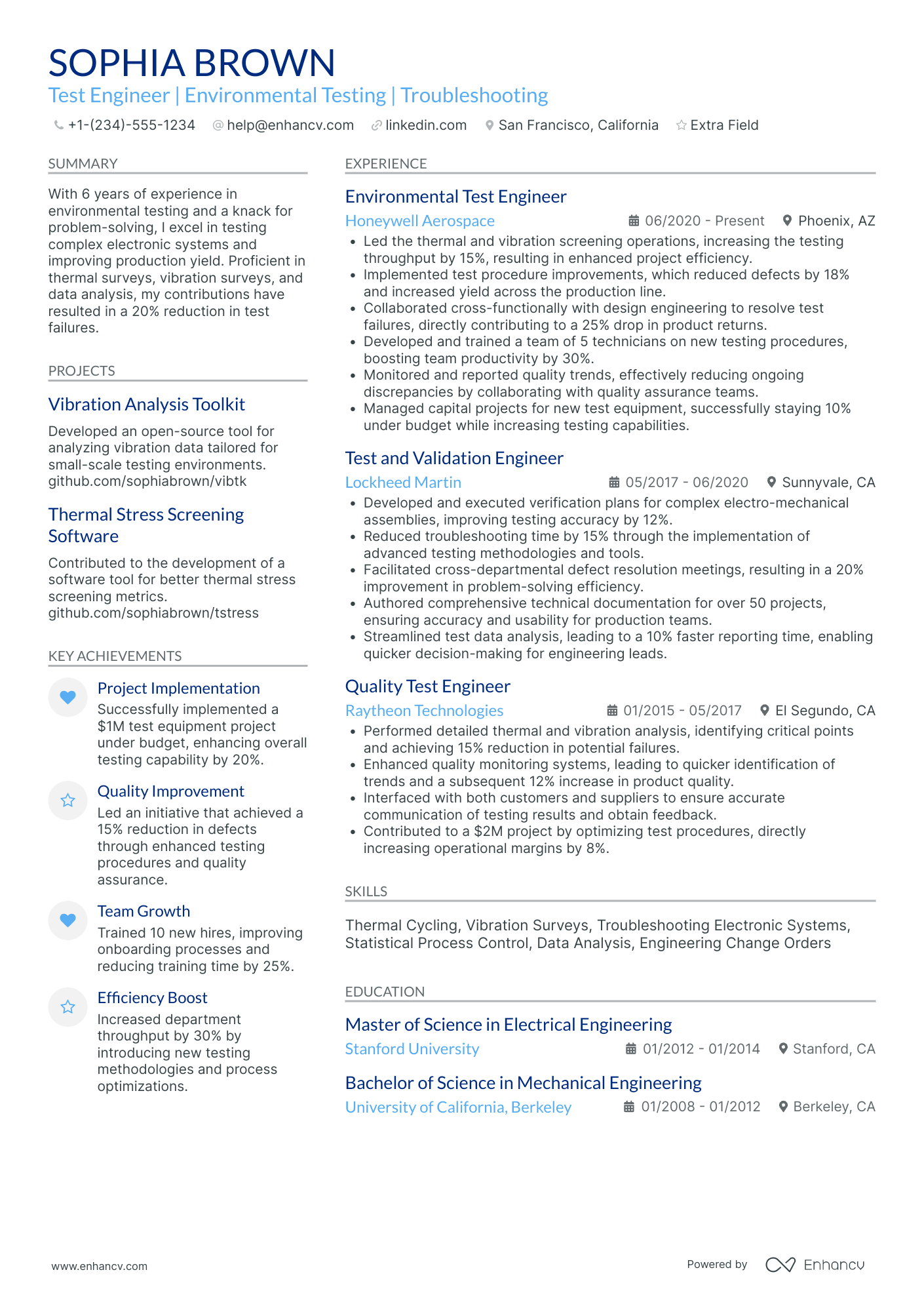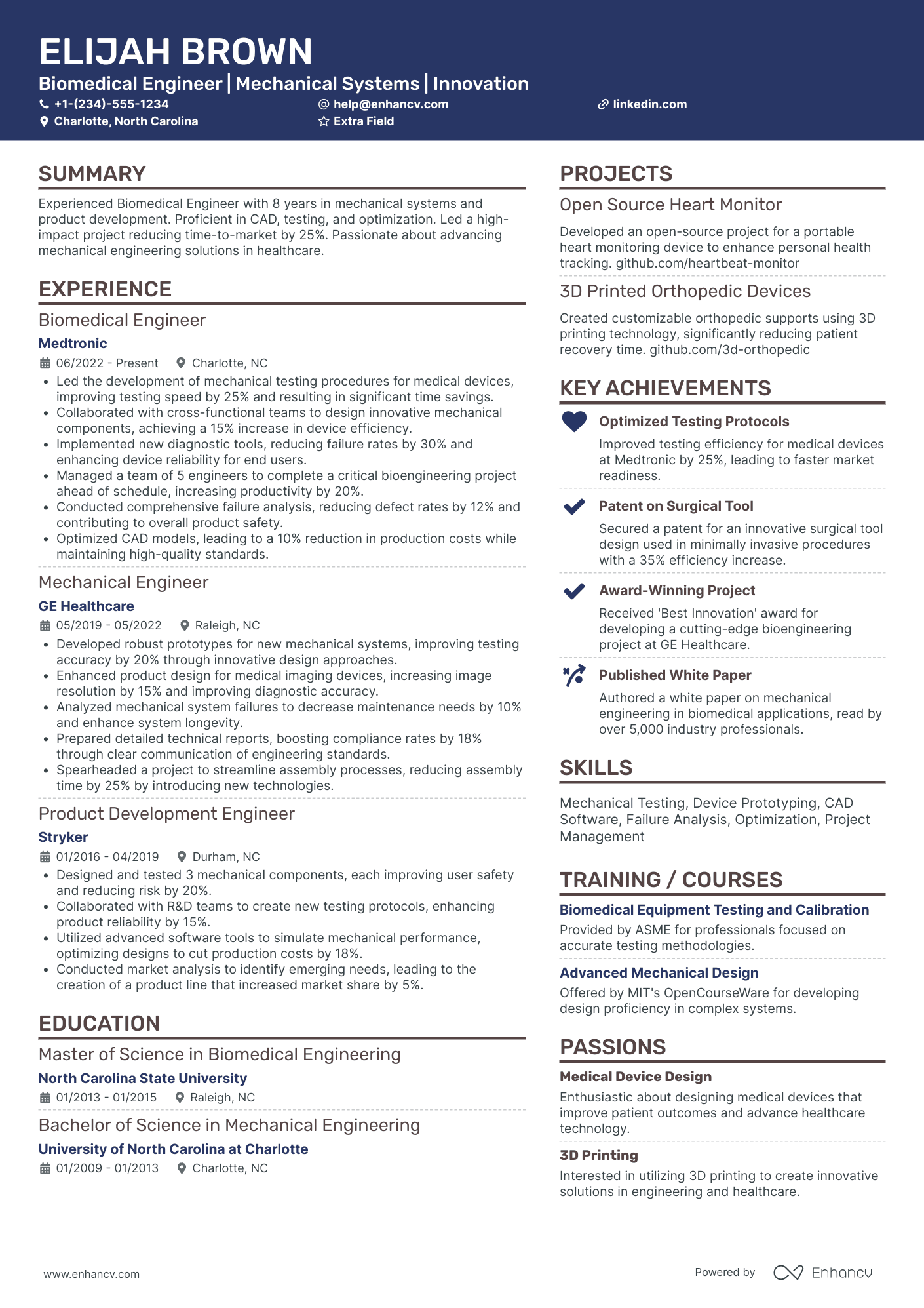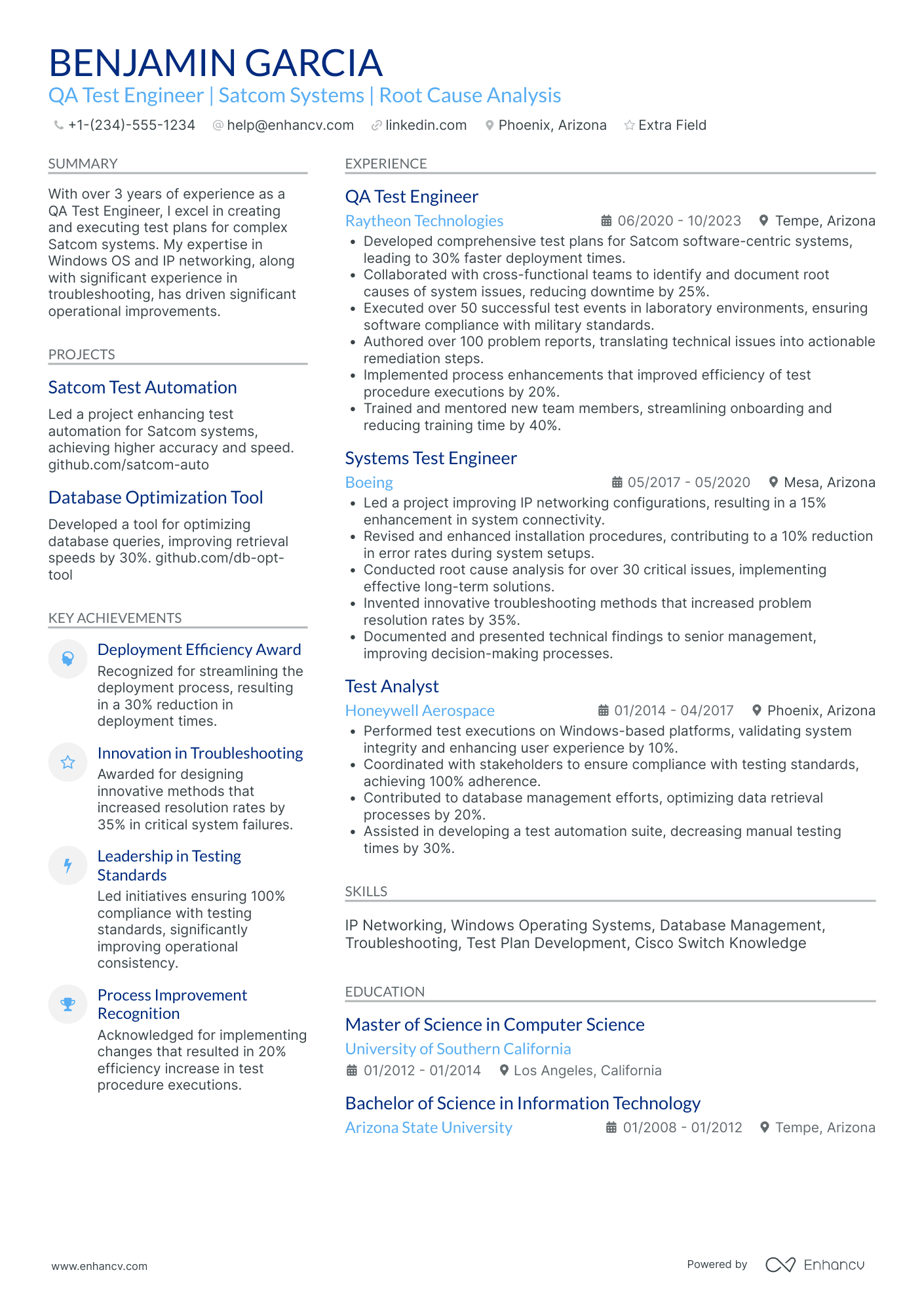We hit a north star after talking to 100s of recruiters, QA leaders and insanely successful test engineers. This entire guide is dedicated to what we learned from real test engineer resume examples.
Here’s what you can expect to takeaway from this guide:
- See what a perfect test engineer resume looks like;
- Try an example resume layout that works best for your resume;
- Make a resume header summary (with good and bad examples);
- Fill in your resume experience like no other applicant will.
How to write a test engineer resume
First thing's first - who is going to read your resume?
Typically there are three people who decide whether you land an interview or not:
- Recruiter;
- Head of development, VPE, or a CTO;
- QA lead.
They all use different criteria to filter your resume as they come from different backgrounds and evaluate your resume based on what they feel is most important:
- Most recruiters have a limited understanding of technology, so they are most likely going to filter your resume based on a couple of important keywords.
- If a Head of development, VPE, or a CTO reviews your resume - they will want to see that their test engineer knows how to enumerate test cases, scale their work, show them the ideal team workflows you’ve worked with, your analytical thinking when it comes to designs, etc.
- A QA lead on the other hand, will consider everything that a Head of Dev/VPE/CTO will, but will also try to make sure your testing resume skills are highly related to the job, and you’ve practically demonstrated soft skills in the workplace.
By this time, if you’re wondering how your resume should look, try one of our resume templates to see if you find something that fits perfectly well for your resume.
It it helps the most important sections of a test engineer’s resume are:
- Resume objective/resume summary
- Your experience as a test engineer
- Your technical skill-set and your soft skills
- Your relevant certifications
How to write a test engineer resume summary
This is something a lot of rf test engineers and software test engineers struggle with. It’s understandable. Writing everything about you in 2-3 lines isn’t an easy thing, especially when you aren’t a copywriter.
Before we show you some test engineer resume summary examples, we want you to know what makes a good resume summary:
- A resume summary should be impressive and should reflect your passion as a test engineer (A lot of test engineers have a deep passion for UX).
- A good resume summary for test engineer should also have important keywords that can help a recruiter identify you as the right candidate.
- If possible, list down your industry vertical (BFSI, Healthcare, Airline, etc.)
Here are two examples of a typical test engineer resume summary.
The second one looks a bit better and gives us a lot more context - but still it isn’t good enough. As someone who is going to spend a lot of time explaining things, it falls just short of overcommunicating their skills as opposed to their actual contribution to the company's business goals.
What's more, a QA Lead we spoke to mentioned that if she sees “MS word” listed in the resume summary, she rejects the candidate straight away.
Now, take a look at this example.
Notice the difference here. This candidate still listed their tech stack (minus the obvious ones), but also doubled on their biggest results career-wise.
If you still find it difficult to write one for yourself and are afraid that you might end up writing a bad one - below is a template that you can copy-paste-replace and use:
“[# of years] years of work experience as a software test engineer for [Your software/industry]. A proven leader and expert in design, analysis and implementation of testing plans and strategies using [tool], [tool], [tool], that led to [business result experessed with numbers]. Highly passionate about how testing improves [e.g. UX] of [e.g. mobile applications]”
Optimize your resume summary and objective for ATS
Drop your resume here or choose a file.
PDF & DOCX only. Max 2MB file size.
How to write a test engineer resume experience section
Be it recruiter, a tech leader, or someone from the QA team - as we spoke to experts, we consistently saw that the following makes a good test engineer resume experience:
- Data collection and pattern analysis;
- Being able to craft testing strategies from scratch and selecting appropriate tests;
- Automation testing procedures and reducing variables;
- Communications skills to facilitate smooth workflows;
- End to end testing capabilities, especially the ability to be able to predict everything up to UAT.
But most test engineers write a resume experience like this:
- •Run weekly tests to go over the state of software
- •Implemented test automation for our product suite
- •Wrote and updated detailed documents for testing department
- •Worked with other departments to deliver end-to-end solutions
- •Responsible for all communications that happen with testing department
Now, take a look at this instead.
- •Saved 30% off time and cost of testing by automation.
- •Implemented automation using Selenium WebDriver, core JAVA, Maven, & TestNG.
- •Extensively automated regression and functional test suites.
- •Implemented the hybrid framework from scratch to represent web pages.
- •Used Maven to execute automation suites on different platform, browser combinations in parallel.
- •Direct communication with client on testing activities and coordination with offshore team.
- •Performed defect tracking & management in JIRA.
But, if you specialize into a certain testing technology, consider adding bullets like this to your resume.
- •Conducted meetings with stakeholders and vertical owners to curate testing standards and exceeded business goals with marketing, finance, engineering and design verticals.
- •Factoring internal processes, researched a unique set of test cases to address content management, localization, SEO and content strategies - resulting in $250,000 worth of savings across 2 years
- •Used FSD and application mockups to create test cases that ensure high quality workflows and reduced lead times
- •Scripted unique test plans, test scripts and processes to remove previously known redundancy by 40% and ensured predictable outcomes.
The last two test engineer resumes will get you hired because someone who’ll read them will know for sure what are your skills, tools and workflows. On the other hand, someone who reads the first resume experience would struggle to answer:
- What tools did you use?
- What team size did you work on?
- What product were you responsible for?
- What results did you deliver?
When you’re writing your testing resume experience, make sure it’s relevant to the job role. Because, as we wrote before, no matter who’s looking at your testing engineer resume - they’ll all try to see if your resume is relevant.
Test engineer resume skills are a must have for a winning job application
Why separating your skills in a different section matter? The answer - readability and habit. HRs are prone to search for this section on applicants' resumes by default. What's more, it is useful to mention your most important skills a few times throughout your resume - in the summary, experience and in a separate skills section. This ensures that the recruiter will read exactly what you want them to.
16 skills for your test engineer resume:
- Programming skills like: Java, Python, PHP, Ruby on Rails
- Familiarity with automation frameworks like Selenium
- Communication(oral and written) skills
- Root cause analysis
- Corrective actions
- Manual testing
- Testing strategy
- Bug discovery / debugging
- Documentation
- Release management
- UAT
- Test case creation
- Continuous improvement
- Reduction in product lead times
- Bug tracking tools like JIRA, PVCS
- IDEs like Eclipse
You don't have to list a multitude of skills. Just pick the ones you have and are already mentioned in the job description.
Now that you have 4 sections done to perfection, let’s look into the last important part of your resume - certifications
How to list resume certifications on your resume
You've got a couple of options to list certificates on your resume - in your resume headline as an addendum to your job title, in your resume summary, or in a separate section.
We suggest using a separate section if you've got more than one important and relevant certificate. Otherwise, a simple abbreviation in the aforementioned sections will do the job. Recruiters will know what's it about.
Some test engineer certifications that are highly recognized and valued by employers are:
- CAST – Certified Associate In Software Testing by QAI
- CSTE – Certified Software test engineer by QAI
- ISQTB
- HP HP0-M102 for UFT version 12.0
- CASTP-P and CASTP-M
Add these certifications to your resume and it’ll be your fifth and final element to a job-winning resume.
Perfect!
Key takeaways:
- Your resume can be reviewed by a recruiter, Engineering Lead or a QA Lead;
- Your resume summary should be extremely impactful;
- A good resume experience is highly specific to the role you’re applying to;
- Add your skills and certification in a separate section to make sure you stand out.
Test Engineer resume examples
By Experience
By Role
